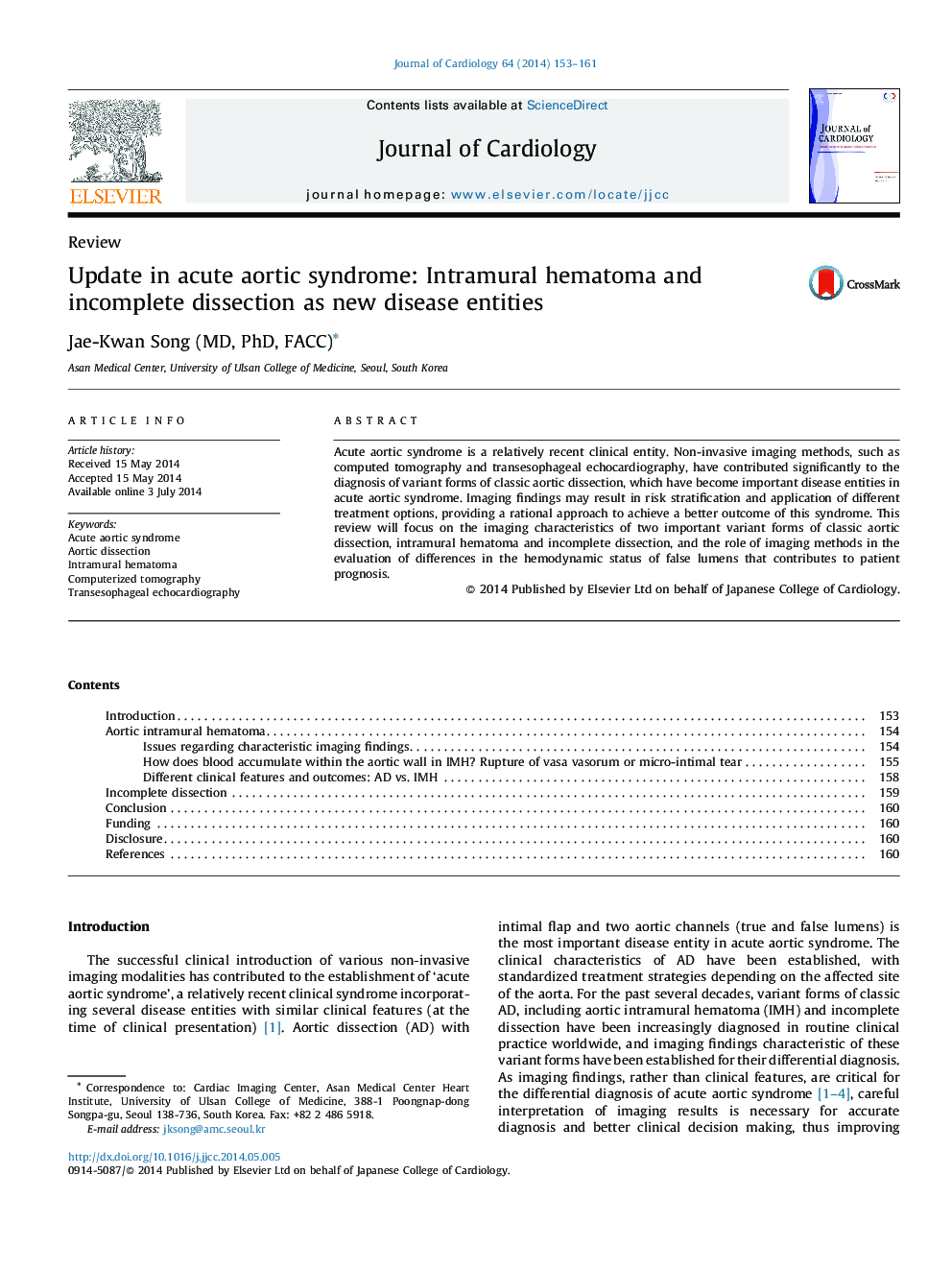| Article ID | Journal | Published Year | Pages | File Type |
|---|---|---|---|---|
| 5984077 | Journal of Cardiology | 2014 | 9 Pages |
Acute aortic syndrome is a relatively recent clinical entity. Non-invasive imaging methods, such as computed tomography and transesophageal echocardiography, have contributed significantly to the diagnosis of variant forms of classic aortic dissection, which have become important disease entities in acute aortic syndrome. Imaging findings may result in risk stratification and application of different treatment options, providing a rational approach to achieve a better outcome of this syndrome. This review will focus on the imaging characteristics of two important variant forms of classic aortic dissection, intramural hematoma and incomplete dissection, and the role of imaging methods in the evaluation of differences in the hemodynamic status of false lumens that contributes to patient prognosis.
